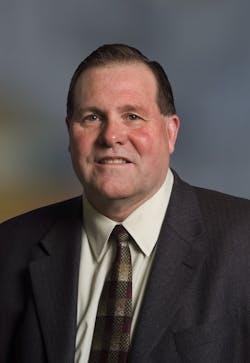Industry Insights: Your Department Can and Should Take the Lead On Home Fire Sprinkler Education
Editor's note: Industry Insights are sponsored blogs submitted by manufacturers and suppliers serving the fire service industry.
For more than two decades, the Home Fire Sprinkler Coalition (HFSC) has worked with local fire department personnel, to improve broad public awareness and understanding of the dangers of home fires, and the life safety benefits achieved with installed fire sprinklers. This educational partnership with the fire service has expanded over the years, and recently it’s evolved to include a stronger focus on community risk reduction (CRR.)
I’m happy to see this progression. CRR protects against harm, including from fire. For both civilians and firefighters, homes represent the biggest component of the national fire problem, it makes sense for communities to include fire sprinklers in CRR work, and there’s a lot of work to do.
For many years public educators have talked about the benefits of fire sprinklers to the general public. Today we better understand the serious health threats that firefighters face, so we also need to talk about the benefits that home fire sprinklers provide to the fire service.
UL and National Institute of Standards and Technology (NIST) research has shown that new home fires become deadly in less than two minutes—with open designs, synthetic furnishings and lightweight construction materials conspiring to make unprotected structures fail faster in a fire. In contrast, fire sprinklers control a home fire in its incipient stage. The fire stays smaller, the integrity of the home is protected, and the outcome is better for everyone.
The equation is pretty simple. When sprinklers activate, they reduce the risk of injury and exposure for responding firefighters. If we want the public to understand the danger of home fires and the value of home fire sprinklers, they need to understand the whole picture.
Online: 9 Steps to Community Safety
My wife and I have lived in a sprinklered home since the 1990s. I can’t imagine living in a home that’s not sprinklered.
However, most of the public doesn't realize that option is available to them. I put that responsibility squarely on the fire chief. The fire chief has to be a community activist. Doing so benefits the public and the fire service.
HFSC has created a new tool to help the fire chief do just that. It's not just the fire chief, but others in the department as well. The free online guide, “9 Steps to A Safer Community,” provides the basic actions fire departments can take to raise the profile of home fire sprinkler protection and encourages the installation of sprinklers in new home construction. These steps provide useful ways fire service can proactively interact with various stakeholders in the community to increase knowledge and build strong consensus for improved public safety.
Home fire sprinklers are not new, but you might be. So Step One offers a brief overview, and it’s a good place to start. If you want more information, HFSC’s main website has detailed content in the Built for Life Fire Department resources.
Steps Two through Four: Deploy Sprinkler Incentives
You don’t have to wait for sprinkler codes to change the future of fire safety in your community. Big homebuilders and developers often put in 50 or more houses in each new development. Even one development presents the opportunity to protect hundreds of residents and firefighters in your jurisdiction for many decades to come.
It's unlikely home builders will come to you. HFSC’s recent national survey showed that only 9% of homebuilders are aware that they can receive valuable incentives from their AHJs in exchange for installing fire sprinklers in all new homes in their developments.
Read these sections so you’ll know how to go to them. Learn how incentives have already been used by other jurisdictions, and explore the most commonly used incentives so you can initiate your local home fire sprinkler incentive plan.
Steps Five and Six: Local Stakeholders
It’s incumbent upon us in the fire service to reach out to our community stakeholders not just as fire safety resources but also as home fire sprinkler activists. We can’t wait around to be invited.
These steps will help you figure out where your community is in new housing construction and how you can identify homebuilders and developers that you need to talk to before their plans are underway. It also guides your work with local planning boards and zoning committees, as well as, with others in the community so you can get your foot in the door and provide them with home fire sprinkler education before it’s too late.
Steps Seven and Eight: Reach Out Effectively
These tactical steps are important in helping you think through and navigate your local politics and potential new home construction activity. You may want to conduct your own focus group with a few of your local stakeholders first to get the lay of the land and help you put your case together. HFSC has also provides some useful downloads so you can prepare a polished presentation, easily customized to each of your audiences.
Step Nine - Selling Sprinklers
You have to be able to sell the benefits of home fire sprinklers in the overall scheme of protecting your community and the homes in your community. Yes—it is “selling”. By the time you get to this last step, you and your AHJ will have paved the way to a final agreement with the builder/developer.
If it sounds daunting, don’t be discouraged. There may not be sprinklers in your code or in your public education programs. That doesn’t mean there never will be. Following this plan can help you make home fire sprinklers better understood today—that goes a long way in making your community safer tomorrow.
